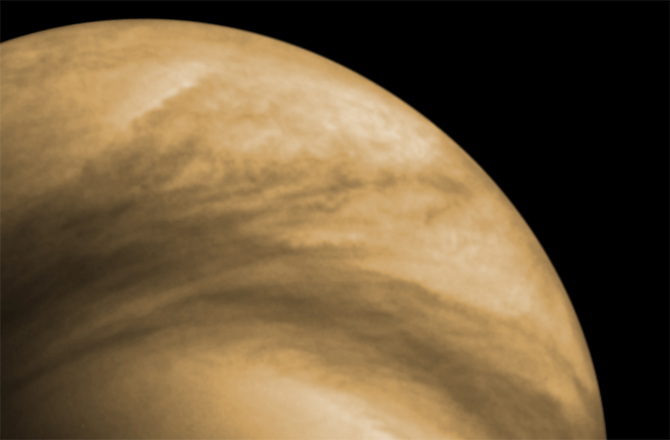Hell On Earth: NASA Recreates Venus' Extreme Atmosphere

Scientists interested in studying Venus, as well as other extreme places in the solar system, now have an option besides expensive, one-off space missions. A new test rig at NASA's Glenn Research Center in Ohio can replicate the planet's lead-melting temperature, crushing pressure and noxious mix of atmospheric gases to create a similar hell on Earth.
"You don't have to go Venus now to do Venus atmospheric research," Daniel Vento, project manager for the Glenn Extreme Environment Rig, or GEER, told Discovery News.
NEWS: Venus May Have Once Been Awash With CO2 Oceans
Inside the 14-ton, stainless steel, 3- by 6-foot chamber, temperatures can soar beyond 900 degrees Fahrenheit, hotter than the surface of Venus. At the same time, pressure can reach nearly 100 times the weight of Earth's atmosphere at sea level.
Add carbon dioxide, which comprises 96 percent of Venus' atmosphere, nitrogen and a sprinkling of other chemicals and scientists can replicate the superfluid physics that shape another world. [10 Weirdest Facts About Venus]
Other test chambers have been able to replicate components of a planet's atmosphere, but GEER takes the simulation a step beyond. "We wanted to do everything at once," Vento said.
ANALYSIS: Baked Exoplanet Gets Lab Treatment
Breaking space news, the latest updates on rocket launches, skywatching events and more!
Engineers plan to outfit GEER with infrared spectrometers and other instruments so scientists can, for example, watch minerals interact and evolve in a Venus-like setting. The chamber also can be set up to replicate Jupiter and Saturn, both warm environments.
With the addition of cooling walls, GEER one day could be used to simulate Uranus and other frozen worlds of the outer solar system. "The long-term plan for GEER is to be able to run any planetary atmosphere," Vento said.
Glenn Research Center, known mainly for its work in aeronautics and rocket engines, didn't intend to get into the planetary science business. But more than a decade ago, engineers were working on a methane rocket engine and ended up with a test facility that also replicated conditions on Titan, Saturn's largest moon.
Explainer: Venus Volcanoes May Be Alive After All
GEER's roots stem from another technology initiative to develop a cryocooler. When the program was canceled, the equipment was converted into the extreme environment rig.
"Turns out, the atmosphere of Venus has an awful lot in common with the inside of a jet engine," Vento said.
In addition to scientific research, GEER also will be used to test sensors and equipment, such as high-temperature electronics, that one day could enable long-duration surface missions to Earth's mysterious sister planet.
This article was provided by Discovery News.

Irene Klotz is a founding member and long-time contributor to Space.com. She concurrently spent 25 years as a wire service reporter and freelance writer, specializing in space exploration, planetary science, astronomy and the search for life beyond Earth. A graduate of Northwestern University, Irene currently serves as Space Editor for Aviation Week & Space Technology.
